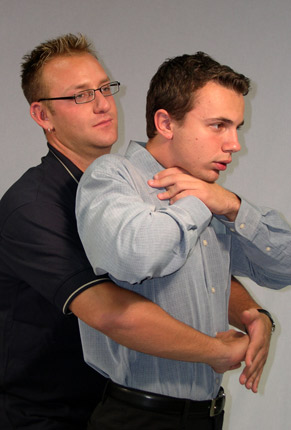Emergency First Aid is for people who want a general knowledge
of first aid principles and the emergency treatment of injuries.
Skills include: victim assessment, CPR, choking, and and what to do
for external bleeding, heart attack, stroke, wounds and burns.
Includes CPR-B certification.
The first aid program is not restricted to aquatic candidates.
You can use the Lifesaving Society's first aid awards to train
non-aquatic staff (camp, playground, maintenance, etc.) and the
general public.
Prerequisite: None.
Instruction & certification: Current
Lifesaving Instructors or First Aid Instructors teach and certify
candidates. The Lifesaving Society deems its certifications to be
"current" for 24 months from the certification date.
Candidate recognition: Certification card.
Required reference material: Canadian First
Aid Manual or Canadian Lifesaving Manual.
Recertification: Emergency First Aid
recertification is the same course.
:::

at-a-glance
- Through practical activities wherever possible, demonstrate an
understanding of the goals of first aid.
- Through practical activities wherever possible, demonstrate an
understanding of the legal implications of providing first aid
treatment.
- Through practical activities wherever possible, demonstrate an
understanding of the principles of universal precautions, including
barrier devices, hand washing, and use of gloves.
- Through practical activities wherever possible, demonstrate an
understanding of the anatomy and physiology of the ABC
priorities.
- Demonstrate primary assessment of a victim including:
- scene survey
- level of consciousness
- airway, breathing, circulation
- major bleeding
- mechanism of injury
Demonstrate secondary assessment of a victim including:
- vital signs
- head-to-toe examination
- history
- Demonstrate one-rescuer adult, child and infant cardiopulmonary
resuscitation on a manikin and how to use an AED.
- :::
- Simulate the treatment of:
- conscious adult, child or infant with an obstructed airway
- complications: a pregnant woman and person who is obese
- Simulate the treatment of an unconscious adult, child or infant
with an obstructed airway.
- Demonstrate the effective direction of bystanders to activate
EMS.
- Demonstrate the recognition and care of a victim suffering from
the following respiratory emergencies:
- Demonstrate the recognition and care of a victim suffering
from:
- shock
- heart attack or angina
- external bleeding
- stroke / transient ischemic attack
- Demonstrate the recognition and care of a victim suffering
from:
- abdominal injury
- burn injury
- facial injury
- Demonstrate the recognition and care of an unconscious
victim. Victim types should include fainting.